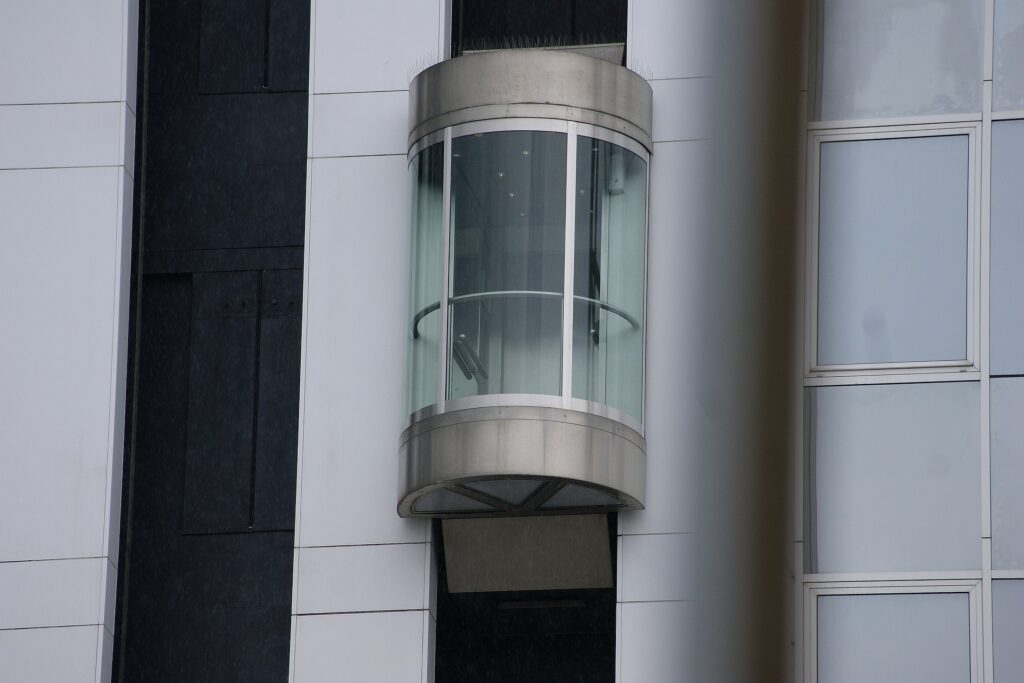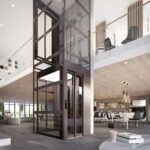Traditional elevators often present rigid spatial demands—square shafts, sharp corners, and structural compromises that clash with curved architecture. Architects and planners frequently face obstacles when integrating conventional lift systems into modern, fluid building designs. The geometry of rectangular lift shafts can break the continuity of design elements, reduce usable floor area, or obstruct visual harmony.
In a world where space optimization and design fluidity are paramount, these constraints demand a more adaptable and elegant alternative.
Introducing the Round Elevator Concept
The round Lift elevator emerges as a smart, design-forward solution for modern buildings. With its circular footprint, it seamlessly integrates into curved layouts, atriums, and panoramic structures. Unlike box-shaped lifts, round elevators accommodate both aesthetic vision and architectural functionality.
These systems not only provide vertical mobility but also serve as visually striking elements within interiors. Their compact and symmetrical form factors make them an optimal choice for architects seeking both utility and visual sophistication.
Aesthetic Appeal and Panoramic Design Integration
Round elevators offer far more than just transport—they contribute to spatial storytelling. Especially when designed as a glass elevator or panoramic elevator, these systems offer immersive movement experiences. A central round shaft becomes a focal feature, often housed within atriums or lobbies, blending engineering with artistry.
Clear cab walls and sleek mechanical components highlight architectural openness, giving passengers 360-degree views of the interior or exterior environment. The result is a modern lift solution that elevates both form and function.
Space Optimization Through Circular Design
One of the most compelling advantages of the round elevator is its efficient use of space. The circular shaft requires less intrusive construction and fits into both central and corner positions of a floor plan. Unlike box elevators that necessitate rigid alignment, round designs adapt to a building’s flow.
This efficiency is particularly valuable in premium urban environments, where every square meter counts and curved spaces are increasingly favored for their spatial flexibility and appeal.
Versatile Applications Across Building Types
The circular lift can be deployed in a wide range of settings—from luxury residences and boutique hotels to shopping centers and public infrastructure. Whether used as a standalone aesthetic centerpiece or integrated discreetly into a curved wall, the round elevator adapts seamlessly. Architects appreciate its spatial neutrality, while developers value the market appeal of innovative design. The technology suits both low-rise and mid-rise structures, making it a versatile tool in vertical mobility planning.
- Luxury homes and villas
- Boutique commercial spaces and art galleries
Material Innovation and Structural Integrity
The engineering behind the round elevator supports both safety and aesthetics. Cabins can be constructed with laminated glass, stainless steel, or even acrylic, ensuring durability while maintaining transparency. Load-bearing elements are concealed within the shaft or the cab’s structural core, minimizing visual obstruction. Additionally, modern curved elevator systems often incorporate gearless traction motors and noise-dampening technologies, resulting in smoother, quieter operation—ideal for residential and high-traffic commercial use.
Integration With Modern Building Systems
Modern round elevators are fully compatible with contemporary smart building systems. Integration with access control, energy-efficient drives, and remote diagnostics enhances both functionality and maintenance. These elevators can be equipped with touchless call systems, dynamic lighting, and real-time floor indicators.
Moreover, because they are often custom-built, architectural elevator designs can be tailored to match specific building requirements, including glass tinting, finish options, and lighting schemes that echo the building’s overall design language.
Curved Elevator Solutions for Design Flexibility
The curved elevator represents a pivotal shift in vertical transport—from utility to design complement. Circular shafts accommodate architectural curves, eliminating the tension between form and infrastructure. Especially in projects with atrium centers, spiral staircases, or dome structures, round elevators align with the existing architectural rhythm.
This flexibility enhances creative freedom in floor plans, offering designers the liberty to experiment with spatial flow without compromising functionality.
Enhancing Accessibility With Style
Accessibility remains a crucial element of any building plan, and the round elevator addresses it with both sensitivity and style. These lifts often feature wide-opening curved doors, smooth entry transitions, and customizable cabin dimensions to support wheelchair access. Furthermore, panoramic designs reduce the sense of confinement, benefiting users with mobility or sensory needs.
A circular lift can thus fulfill both regulatory compliance and user comfort in public or private architectural spaces.
- Wheelchair-friendly cabins and controls
- Enhanced visibility and comfort for all age groups
Embracing the Future of Vertical Mobility
As architecture continues to evolve toward organic forms and human-centric spaces, the round elevator offers a mobility solution that complements this shift. Its sleek form, adaptable placement, and innovative materials make it a fitting feature in forward-looking building projects.
Whether as a highlight of architectural vision or a discreet yet efficient lift system, round elevators are redefining how vertical movement is planned and experienced.
Conclusion: Design Smarter With Round Elevators
Round elevators blend spatial innovation with architectural grace. They resolve traditional design constraints, enhance user experience, and offer flexible integration into a variety of structures. With applications in both high-end design and efficient building planning, the round elevator is more than a lift—it’s a modern statement in vertical mobility.


